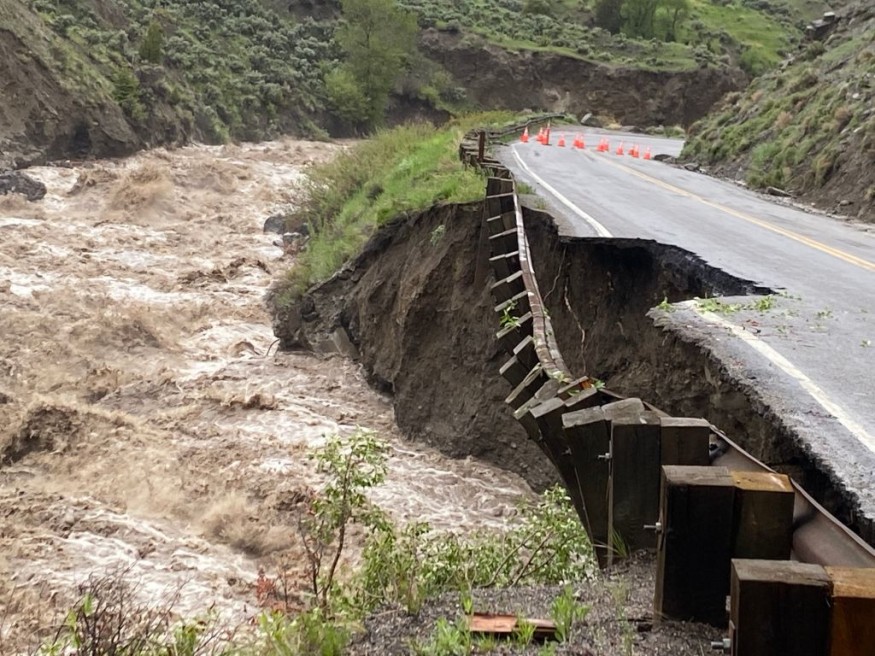On Wednesday, officials reopened a portion of the iconic Yellowstone National Park. Still, people in one adjacent city are concerned that too much damage has been done to ensure a successful summer tourism season.
The Yellowstone Wildlife Sanctuary near Red Lodge, Montana, is a haven for creatures such as foxes, coyotes, and black bears who can no longer survive on their own in the wild.
Historic Flooding

After a major flooding storm at Yellowstone National Park, this past week forced the temporary closure of all entries, the sanctuary itself is now in need of rescue. This contains the northeast entrance, the route to which Red Lodge is located. Since the beginning of June, the Yellowstone area has gotten four times the typical amount of rainfall, with one month's worth of rain dropping on Sunday, June 12. The next day, the situation deteriorated, so 10,000 people were compelled to flee the park.
The park's southern loop reopened on Wednesday, and the northern loop is anticipated to reopen within two weeks when cleanup and repairs are completed. On June 19, National Park Service Director Chuck Sams announced a $50 million emergency funding plan to begin recovery efforts following what was described as a "once in a 500-year event," which prevented tourists from passing through the park area, as well as the quaint Red Lodge community and its wildlife sanctuary.
"We rely entirely on tourists," Eden Wondra, the sanctuary's education manager, told AccuWeather National Reporter Jillian Angeline. In addition to harboring a variety of species that require living help. The sanctuary also hosts a range of educational sessions for local students to foster a "culture of caring that will restore the human-nature link."
Also Read: Sections of the Yellowstone May Remain Close During the Entire Summer Season Because of Severe Flooding
Blocked Off
Red Lodge, which has a population of just more than 2,000 people, has been blocked off from tourists since the disaster and is preparing for a summer season that may reduce tourism. Yellowstone expected at least 1 million visitors for its 150th anniversary, but that plan has been canceled due to the destructive rains.
"We are going to take a financial blow without the number of tourists we regularly have in the summer," Wondra said.
Aside from the prospect of a significant decline in tourists, the Red Lodge area also deals with the aftermath of the flood. The town's most recent challenges follow a reduction in tourists over the previous several years owing to the COVID-19 epidemic and destructive forest fires.
A Difficult Challenge
According to local officials, the flooding incident was a one-of-a-kind challenge that brought the community together.
Another key concern in the aftermath of the floods was the absence of flood insurance among the many devastated homeowners and business owners, making the rebuilding process much more difficult. Many local properties were not in a flood plain, causing homeowners to forego flood insurance and creating a cash shortage to assist with adequate property repair.
Working Together
In response, the community foundation established the Carbon County Disaster Relief Fund for county residents, including Red Lodge and nearby communities. The fund assists residents by "stabilizing the immediate flooding damage and shifting towards recovery initiatives."
Donations to the fund can be made through the foundation's website, and the local Bank of Red Lodge will match them dollar for dollar up to $25,000 in total. Goods donations are being arranged in collaboration with the American Red Cross.
Volunteering is also an option for people who live nearby or are ready to go to southern Montana. Volunteering can be arranged through the Carbon County Alert website.
Related Article : Exposure to Major Disasters Can Cause Long-Term Mental Health Problems
For more climate and weather updates, don't forget to follow Nature World News!
© 2025 NatureWorldNews.com All rights reserved. Do not reproduce without permission.





